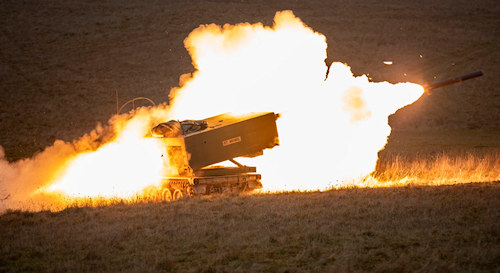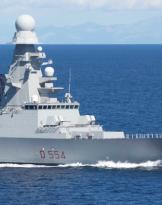The ongoing conflict in Ukraine has highlighted, even to the general public, the importance of UAVs in military operations, even those of an amateur type.
Before proceeding with an examination of the situation in order to identify elements of interest for the enhancement of capacity among the national Land Forces, it is appropriate to refer to standard terminology. In this article the one indicated in the following figure will be used.
There are also others, but the articulation we will use is guided by operational use and, therefore, lends itself better to supporting the concepts that we will try to explore together.

In the rest of the article we will not deal with the problem of UCAVs1, while both UAVs with weapons release capabilities and loitering ammunition2 in which we also insert what the press defines as "kamikaze UAVs".
First, we can say that the importance of UAVs of the HALE (High Altitude Long Endurance) and MALE segments (Medium Altitude Long Endurance) it has already been widely appreciated by public opinion, as well as by specialists, since their use has been widely discussed in the course of the most recent conflicts.

Many people have seen EVIL in action (Reaper e Predator, for example) as well as the possible use of HALE on the sidelines of the conflict in Ukraine (Global Hawk NATO and USA), not to mention TUAVs (Shadow e ScanEagle) in Afghanistan (photo).
The real news, if we can say so, is constituted by the widespread use of UAVs of the class "Maneuver Range" on the part not only of Ukrainian and Russian units, but even of private citizens, even very young ones, who have improvised UAV operators in support of military units.
In reality, the need for a wide and widespread range of small-sized UAVs had already emerged strongly in Afghanistan, during the ISAF operation. All the countries involved - including Italy - had responded with the acquisition of COTS equipment3. The Russian Armed Forces themselves had noted this need (also in terms of contrast) both in Syria and in Libya (through the Wagner staff).
What certainly emerges as an innovative element from the Ukrainian Campaign is that in a symmetrical conflict the need for the use of UAVs Maneuver Range to have one situation awareness4 has become vital, taking the place of what in the past was binoculars and visual observation in general, integrating with all those other advanced electro-optical and radar instruments that have been introduced more or less recently on terrestrial platforms (see JANUS, GBOSS , etc.).
Referring to one great elementary unit of the brigade level, we can say that almost all units and component formations (tactical group, exploration unit, artillery, genius, transmissions, logistics) need to use aircraft of the class Maneuver Range (especially multi-rotor helicopters) in order to perform their task with more precision and shorter times.

This does not mean that at the highest level and, therefore, starting from the brigade command there is no need to have assets capable of supporting the Acknowledgement, la Monitor and Target Acquisition with even higher category UAVs. But we have seen that the existence of exclusively centralized apparatuses determines a chain Sensor To Shooter5 (S2S) too long with the consequence that i reaction times become high and response times to the opponent's maneuver become excessive. This involves a loss of efficiency / effectiveness but above all an increase in friendly losses.
The experience in Ukraine has shown, for example, that the effectiveness of fire, even planned, as well as the activities of c / battery, c / UAV, the adaptation of the maneuver on the ground and the activities of mobility and c / mobility require direct visibility in depth, greater than required in the past. This is to be related both to the range of action of modern weapon systems which has considerably expanded, and to the presence on the ground of civilian populations and critical infrastructures close to, if not immersed, in the adversary devices. The "surgical" precision, therefore, becomes a must both for humanitarian reasons and for the need to safeguard infrastructures essential for the survival of the local social fabric and the conduct of future operations. To all this it must be added that in operations the reference times are imposed by the opponent. If its S2S chain is faster than ours, any technological and / or numerical superiority may not be sufficient to ensure victory.
 If the need is clear, the overcoming of the identified capacitive gap is not so immediate. In fact, the problem is not eliminated with the simple distribution of mini and micro UAVs at all levels.
If the need is clear, the overcoming of the identified capacitive gap is not so immediate. In fact, the problem is not eliminated with the simple distribution of mini and micro UAVs at all levels.
It is clear, in fact, that in an environment that sees the presence of technologically advanced forces, it will not be only our UAVs that fly. The enemy will also have their own and will have their own countermeasures, including loitering ammunition we mentioned at the beginning of the article.
Raising a UAV can therefore mean being immediately identified and being the subject of non-lethal (electronic, for example, in the best of cases) or lethal law enforcement activities. In both cases it is clear that we will be prevented from gaining a clearer vision of what we have to fight against, as well as losing precious assets and human lives.
Obviously, the more or less wide availability of UAV assets by adverse forces makes even the simplest activities on the battlefield difficult, from movement, to maintenance, refueling and hiring of the device on the ground. We have seen how in Ukraine even the simple parking in areas with thick vegetation has led to the loss of the vehicles involved, including armored vehicles. The neutralization activity by the available fire sources (c / c weapons, artillery, loitering ammunition) with a reduced S2S chain it can become so effective as to prevent almost all activities on the ground, under penalty of very high losses.
Also in this sector the problem arises of what to oppose to the threat in the eternal struggle between spear and shield.
The contrast to the adversary threat as well as the optimal use of our abilities passes through the following key measures.
 The first is that of the availability of one situation awareness which also takes into account the presence of the UAVs of the class Maneuver Range. Given the small size and the equivalent radar surface, the availability of an LRAP (Local Recognized Air Picture) which also reports the presence of the aircraft in question is not so simple.
The first is that of the availability of one situation awareness which also takes into account the presence of the UAVs of the class Maneuver Range. Given the small size and the equivalent radar surface, the availability of an LRAP (Local Recognized Air Picture) which also reports the presence of the aircraft in question is not so simple.
Pending the availability of integrated and verified radar data, disseminated through the support systems to C2 (Command and Control), it will be useful to have systems to be used to form local information bubbles and based, as an example of the civil world, on systems DJI type Aeroscopes6 (photo) which allow the use of both ground stations with coverage of a few tens of kilometers and mobile stations.
The second element to be developed extremely quickly is that of countermeasures, lethal and otherwise. If in terms of SHORAD and V-SHORAD contrast, also in the light of the DPP7, the national capacity is being established, it is necessary - also in this case - to remember that the protection of friendly devices cannot be the object of centralized systems only and procured in a relatively long time.
Protection at the level of a single vehicle, as for c / c weapons, must be based on local and automatic systems. Hence, automatic land vehicle self-protection systems (APS), as well as electronic measurement systems, must also be effective against this type of threat. Since many of the modern c / c weapons act on the roof of armored vehicles, the adaptation / verification of APS to the threat of loitering ammunition it shouldn't require an impossible effort. For the national Armed Forces, moreover, it is a further alarm bell since national vehicles do not present, to date, this type of protection. It will be appropriate to bring them into service before it is too late.
This, of course, must be accompanied by an urgent and systemic plan for the introduction into service of mini / micro UAVs, also of the type loitering ammunition, adapted to the needs of single units. It is necessary that the information acquired can in any case become common heritage and contribute to strengthening and consolidating the information framework at the tactical and sub-tactical level, without which no commander is able to make correct decisions and use the best weapon system to obtain the desired effect.
Therefore, another problem arises and that is have a command and control support system conceived from a systemic point of view (System of Systems) and not as a distributor of individual applications.
Mario Ruggiero
Major General (res.) Mario Ruggiero attended the Military Academy of Modena and the Application School of Turin from 1978 to 1982. He held command positions at various engineering units in Caserta, Udine and Cremona. He attended the 117th General Staff Course and the 117th Senior Staff Course in Civitavecchia respectively from 1992 to 1993 and from 1994 to 1995. In 1995 he participated in the 3ème Promotion du Collège Interarmèes de Dèfense in Paris. He served as a general staff officer and head of the Future Plans section in the general and financial planning department of the Army staff from 2000 to 2003. In November 2004 he was appointed head of the general planning office of the 3rd ward of the Army. Defense Staff. In September 2008 he was appointed director of the Defense Innovation Center. Subsequently, he commanded the “Pinerolo” armored brigade in Bari and in July 2011 he became deputy head of the 3rd department of the Defense staff. In April 2012 he was appointed Chief of the Logistics Department of the Army General Staff. During his career, the gen. Ruggiero has participated in several military missions abroad (Afghanistan - Operation Salam, Kuwait - Mine clearance operations, Bosnia-Herzegovina - SFOR, Kosovo - KFOR, Iraq - Ancient Babylon / Iraqi Freedom). Major General (res.) Ruggiero participated in the "Resolute Support Mission" in Afghanistan, as Deputy Chief of Staff "Supporti", from May 2015 to May 2016. He was awarded the gold medal for the long command, three NATO commemorative medals for SFOR, KFOR and Resolute Support, the Commemorative Medal for Operation “Ancient Babylon” and the US Legion of Merit (Officer). He was also made a Knight of the Order of Merit of the Italian Republic.
1 Unmanned Air Combat Vehicles. These systems constitute the third generation of UAS ("Unmanned Aerial System") in a general sense and the first with characteristics such as to completely replace the piloted platforms also for "combat" missions. These solutions will be able to carry not only AS and AA armament, but also to proceed with the engagement of the air and surface target in a completely autonomous way.
2 Una circulating ammunition[1]: suicide drone: Kamikaze drone (In English loitering ammunition or also drone suicide o kamikaze drone), is a weapon, a weapon system, in which the ammunition is an armed drone that flies over an area, waiting, in search of the target, and then attacking only once the latter has been located or when this he exposes himself. (source wikipedia)
3 Commercial Off-The-Shelf.
4 "The perception of the elements in the environment within a volume of time and space, the comprehension of their meaning and the projection of their status in the near future." o: “the ability to have accurate real-time information of friendly, enemy, neutral, and non-combatant locations; a common, relevant picture of the battlefield scaled to specific levels of interest and special needs. "
5 Where it shooter it can also be an actuator in tasks that do not involve the use of lethal force.
7 Multiannual Policy Document for Defense 2022-2024
Photo: US Marine Corps / web / US Navy / US Army / ZALA AERO GROUP / DJI












